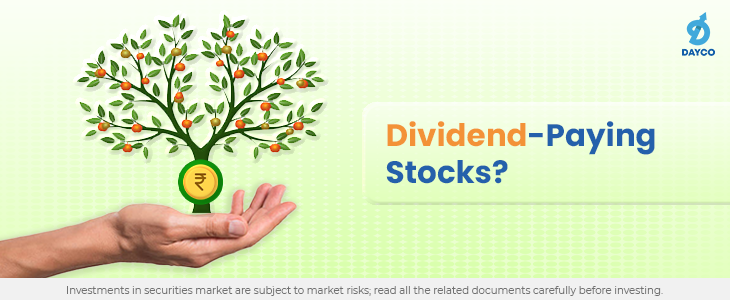Dividend stocks are a great way to build long-term wealth, providing you with a steady stream of income while also allowing you to benefit from potential share price appreciation. However, not all dividend stocks are created equal, and it’s not just about the dividend yields! With so many options available, it can be challenging and daunting to select the best ones or know where and how to start. In this blog post, we’ll share some tips and tricks to help you choose the best dividend stocks for your portfolio, ensuring that you maximize your returns and minimize your risks. So let’s dive in!
How to choose dividend stocks?
Before delving into the details, it’s best to clear a few things up. First, since you will be selecting companies from a vast universe of listed Indian stocks– which can be overwhelming, a few screening criteria can help you easily narrow down your choice. Those are the dividend-paying history of the companies and the growth in dividends over the past three and five years. For example, a company that has paid dividends for the last five years and has a dividend growth rate of more than 5% can be a screener. Companies that make these cuts can be further analysed to help you select the best out of them.
Second, don’t focus only on the dividend yield. The dividend yield can be high if the market price of the share falls or has been falling over a period of time. Investing in such stocks without due diligence will not benefit your portfolio.
- Profitability: You don’t have to be smart to figure out that companies having strong and stable profits are more likely to pay dividends to shareholders. Probing a bit deeper into profits, you should analyse how much the profits (Check PAT or Profit After Tax) have grown over the years. Check whether the annual growth in PAT has been consistent over the last five years. A company can always surprise investors with solid profit growth, but consistency is key. Remember that a company cannot sustain abnormal profit growth, and earning disappointments are bad news for stock prices.
- Cashflows: Accounting profits don’t always paint the right picture. Net profit (PAT) levels and growth are good signs, as discussed above, but cash pays your dividends. A company should have a healthy cash flow– meaning a healthy operating cash flow (CFO) with a growing trend. More importantly, as an equity shareholder, you should look for free cash flow to equity (FCFE). FCFE measures how much cash is available to equity shareholders after all expenses, capital expenditures, and debt payments.
FCFE = Operation Cashflow – Capital Expenditure + Net Debt
A positive FCFE that can easily pay equity dividends is a very healthy sign.
- Dividend Payout: As mentioned earlier, dividend yields shouldn’t be seen in isolation. It is better to combine it with the dividend payout ratio to draw a better conclusion. The dividend payout ratio measures the % of EPS (Earnings per share) that is being paid out by the company as dividends. It can be calculated by dividing DPS (Dividend per share) by EPS. You should look for a company that has a stable payout % that isn’t too high (more than 50%). High payout ratios are tougher to maintain in the long run. In order to check whether the payout ratio is sustainable and not on the higher side, check the closest peers. Another metric, dividend coverage ratio (Annual EPS/Annual DPS), can be used to understand the number of times a company can pay dividends to its equity shareholders using its PAT– a high figure is favorable.
- Check debt levels: High debt levels are not a comforting sign for investors expecting high dividends. Equity dividend payments aren’t obligatory for a company, while creditors need to be paid on time. Companies with excessive debt levels will rather utilise excess funds for paying off debt than dividends. In order to analyse the debt levels, you should take a look at the company’s debt-to-equity ratio. If it’s anything above 2 (times), it is better to move on.
Final Words
You should always keep in mind that relying on just one factor isn’t enough to gauge a company’s strength or, for that matter, its dividend-paying capacity. If you’re someone who’s keen on dividend investing, it’s crucial to do your homework and look into other aspects of the company’s financial health, like growth trajectory, management efficiency, and how it stacks up against competitors. Sure, high dividend yields might seem enticing, but you don’t want to put your money into a company that’s not worth investing in solely based on its dividend yield.
If you have a question, share it in the comments below or DM us or call us – +91 9051052222. We’ll be happy to answer it.
~ Nischay Avichal

















Please name some dividend paying stock for
my portfolio for 4/5 yrs.,with capital appreciation of the stock
Very good suggestion. Thank you